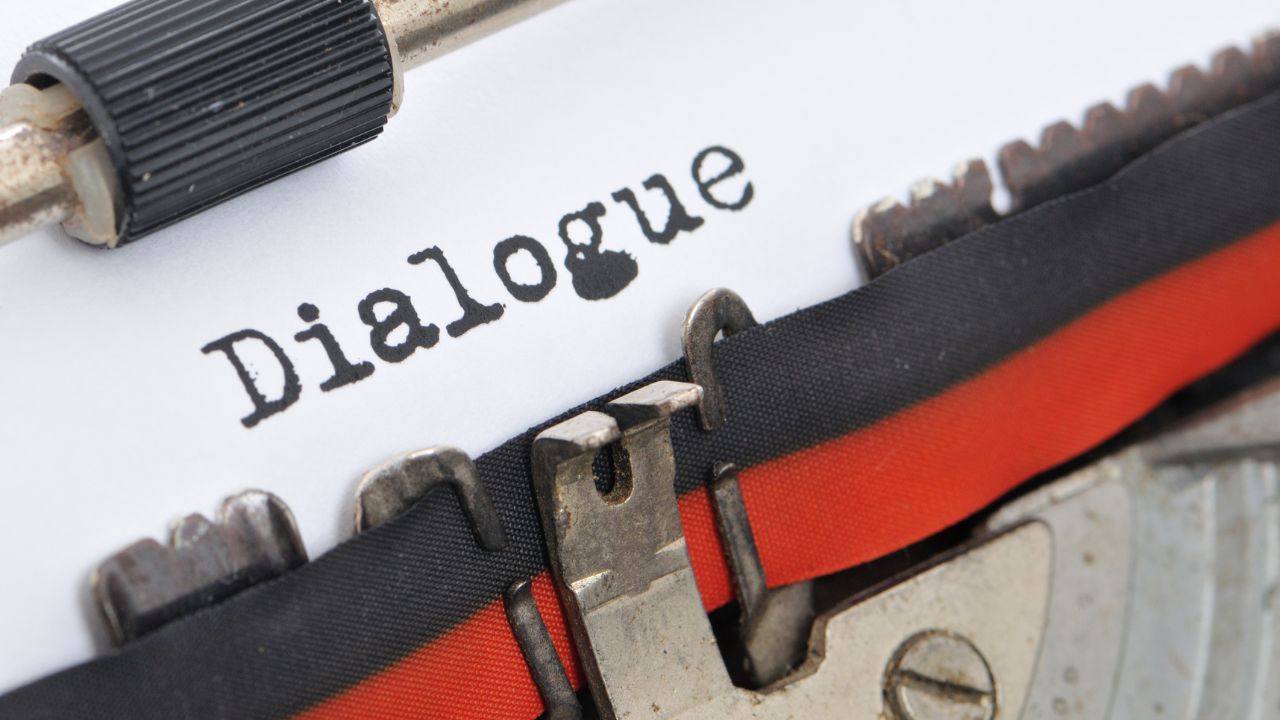- Understanding the Role of Dialogue in Storytelling
- Achieving Authenticity in Dialogue
- Purposing Dialogue to Advance the Plot
- Creating Tension and Conflict through Dialogue
- Maintaining Clarity and Readability
- Ensuring Smooth Transitions and Pacing
- Conclusion
- Bad Dialogues and Suggestions for Improvement
- Examples of Great Dialogue & Lines from Literature
- Keywords:
- Key Takeaways:
- You Might Still Be Wondering about…
- How can dialogue be used to reveal a character’s backstory without directly stating it?
- How can dialogue help build relationships between characters?
- What are some effective techniques for creating subtext in dialogue?
- How can dialogue contribute to world-building and setting?
- How can beats and action be incorporated into dialogue to enhance the reading experience?
- How can dialogue be used to create tension even without overt conflict?
- How can a writer ensure that dialogue remains engaging and avoids becoming monotonous?
- What are some effective techniques for revealing character traits through dialogue?
- How can dialogue be used to create anticipation and foreshadowing?
- How can dialogue be used to convey emotions without explicitly stating them?
- Common Misconceptions:
- Dialogue should replicate real-life conversations verbatim.
- Dialogue should always directly state characters’ thoughts and emotions.
- Dialogue should always be fast-paced and filled with conflict.
- All characters should speak in the same way.
- Dialogue should provide all the necessary information explicitly.
- Dialogue attributions should always be descriptive and varied.
- Characters should always say exactly what they mean.
- Dialogue should be long-winded to provide depth.
- Dialogue tags should always be placed at the end of sentences.
- Dialogue should always move the plot forward directly.
In the world of literature, dialogue is more than just words exchanged between characters—it is a vital storytelling tool, a mechanism that propels the narrative, develops characters, and adds depth to the plot. Crafting realistic and engaging dialogue is akin to walking a tightrope, a skill that requires a subtle balance of authenticity, clarity, and purpose. Here, we will delve into some practical tips and techniques to help you master the art of writing dialogue.
Understanding the Role of Dialogue in Storytelling
Before delving into crafting dialogue, let’s understand its significance in storytelling. Dialogue acts as a vehicle for character development, revealing their thoughts, emotions, motivations, and personalities. It builds relationships between characters and discloses information about the story’s setting, context, and backstory. Finally, dialogue serves as a catalyst for conflict and resolution, driving the narrative forward and creating tension and suspense.
Achieving Authenticity in Dialogue
Achieving authentic dialogue, however, is not as simple as transcribing real-life conversation. Real conversations are often littered with mundane details, interruptions, digressions, and repetitions—elements that can render fictional dialogue tedious. The key is to balance authenticity with narrative function, ensuring that the dialogue feels real but also serves a purpose.
One way to achieve this balance is by considering each character’s unique voice. Think about their background, age, education, socio-economic status, region, and personal quirks. A teenager from Brooklyn will speak differently than a middle-aged lawyer from London. Their vocabulary, sentence structure, idioms, and even rhythm and pace should reflect their individuality.
Eavesdropping on conversations in cafes, parks, or public transportation can provide invaluable insights into how people talk, their speech patterns, and their rhythm. This exercise will help you better understand how to imbue your dialogue with a sense of authenticity.
Purposing Dialogue to Advance the Plot
Every line of dialogue should serve a purpose in the story, whether to develop a character, advance the plot, or create tension. If a conversation doesn’t contribute to the story in a meaningful way, it may be better to cut it out. Even the smallest exchange can reveal character traits, hint at past events, or foreshadow future actions.
Remember, though, subtlety is key. Readers don’t want to be spoon-fed information. Avoid having characters directly state their thoughts and feelings; instead, let these aspects be inferred through their words and actions. Show, don’t tell, is a mantra that should be echoed in your approach to dialogue.
Creating Tension and Conflict through Dialogue
Conflict is the engine that drives narrative. In dialogue, conflict can emerge in a myriad of ways—through disagreements, misunderstandings, or opposing goals. Subtext—what characters imply or think but don’t say—is an incredibly powerful tool for creating tension. When the spoken words conflict with the unspoken thoughts, it builds suspense, leaving readers eager to discover the truth.
Maintaining Clarity and Readability
While crafting dialogue, it’s essential to maintain clarity and readability. The aim is to keep the reader immersed in the story, not to leave them confused or frustrated.
Attributions, like ‘said,’ ‘asked,’ ‘replied,’ help readers know who is speaking. While it’s tempting to use more descriptive tags like ‘exclaimed,’ ‘murmured,’ or ‘protested,’ using ‘said’ most of the time is more effective. It’s virtually invisible to readers, allowing them to focus on the dialogue itself rather than the attributions.
Also, consider the length of your dialogue. Large blocks of speech can seem intimidating or boring. Breaking up the dialogue with action or description can make it more digestible and dynamic. This tactic, often referred to as “beats,” gives the reader visual breaks and adds depth to the scene and characters.
Ensuring Smooth Transitions and Pacing
The pace of the dialogue plays a significant role in controlling the tempo of the scene. Quick, short exchanges can create a sense of urgency or tension. Longer, more drawn-out dialogue can slow down the pace, allowing for reflection or exposition. Varying the pace according to the scene’s demands can make your dialogue more engaging.
Finally, ensure smooth transitions between dialogue and narrative. Seamless transitions maintain the story’s flow and rhythm, keeping the reader engrossed. Carefully planned dialogue tags, action beats, and appropriate punctuation can ensure a graceful back-and-forth between dialogue and description.
Conclusion
Writing compelling dialogue is an art that requires practice, patience, and a keen understanding of the story and its characters. The dialogue should be a mirror reflecting the character’s personality, their motivations, and their relationships with others. It should be a window into the world of the story, revealing important context and driving the narrative forward. By using the tips and techniques discussed, you can elevate your dialogue from functional to phenomenal, engaging your readers and immersing them in the narrative.
Bad Dialogues and Suggestions for Improvement
Here are some examples of bad dialogues and suggestions for improvement:
Bad Dialogue: “I’m so angry right now!”
Improvement: Show the character’s anger through their actions and choice of words. For example, “Their face turned red as they slammed their fists on the table. ‘I can’t believe you did this!’ they seethed.”
Bad Dialogue: “I love you, Sarah. You mean the world to me.”
Improvement: Instead of stating the obvious, show the character’s love through specific details and actions. For example, “He took her hand, his eyes filled with warmth. ‘You make every day brighter,’ he whispered, pressing a gentle kiss on her forehead.”
Bad Dialogue: “Let’s go to the park.”
Improvement: Make the dialogue more engaging by adding context or subtext. For example, “She glanced at him, a mischievous smile playing on her lips. ‘How about we escape to the park? We can have a picnic and forget about our worries for a while.'”
Bad Dialogue: “I’m sorry.”
Improvement: Add depth and specificity to the apology. For example, “Her voice trembled as she looked into his eyes. ‘I never meant to hurt you. Please forgive me.'”
Bad Dialogue: “I can’t believe this is happening.”
Improvement: Provide more insight into the character’s thoughts or emotions. For example, “Her voice cracked, a mixture of disbelief and despair. ‘Everything we’ve worked for… it’s all falling apart.'”
Bad Dialogue: “I’m really scared right now.”
Improvement: Show the character’s fear through their body language and words. For example, “She hugged herself tightly, her voice quivering. ‘I can’t shake off this feeling of dread. What if something terrible happens?'”
Bad Dialogue: “I’m bored. There’s nothing to do.”
Improvement: Convey the character’s boredom through more vivid language and imagery. For example, “He slumped in his chair, his voice filled with monotony. ‘I feel like I’m drowning in a sea of sameness. There’s no spark, no excitement.'”
Bad Dialogue: “I can’t believe you did that. It’s so unfair!”
Improvement: Add depth to the character’s complaint and show their emotional investment. For example, “Her voice rose with a mix of anger and hurt. ‘How could you betray my trust like that? After everything we’ve been through, it feels like a knife in the back.'”
Bad Dialogue: “I’m really happy right now.”
Improvement: Show the character’s happiness through their behavior and dialogue. For example, “He jumped up and down, a wide grin spreading across his face. ‘I feel like I’m on top of the world! This is the best news ever!'”
Bad Dialogue: “I’m so tired.”
Improvement: Convey the character’s exhaustion with more descriptive language. For example, “She slumped against the wall, her voice barely above a whisper. ‘I feel like every ounce of energy has been drained from my body. I can barely keep my eyes open.'”
Bad Dialogue: “I hate you!”
Improvement: Explore the character’s hatred in a more nuanced way. For example, “Her voice dripped with venom as she gritted her teeth. ‘You’ve shattered my trust and destroyed everything we had. I never thought I could feel such intense anger and betrayal.'”
Bad Dialogue: “I’m really excited about this opportunity.”
Improvement: Show the character’s excitement through their words and actions. For example, “He clapped his hands together, his voice brimming with enthusiasm. ‘This is the chance I’ve been waiting for! I can’t wait to dive in and make the most of every moment.'”
Bad Dialogue: “I’m feeling so nervous right now.”
Improvement: Show the character’s nerves through their physical sensations and dialogue. For example, “She fidgeted with her hands, her voice shaky. ‘My heart is racing, and my palms are sweaty. I can’t shake off this feeling of butterflies in my stomach.'”
Bad Dialogue: “I’m really sad about what happened.”
Improvement: Convey the character’s sadness with more evocative language. For example, “Her voice quivered with sorrow, her eyes filled with unshed tears. ‘My heart feels heavy, like a dark cloud has descended upon it. I don’t know how to move on from this pain.'”
Bad Dialogue: “I’m so in love with you.”
Improvement: Instead of a generic declaration, show the character’s love through specific details and actions. For example, “He cupped her face in his hands, his voice filled with tenderness. ‘Your laughter is music to my ears, and the way your eyes light up when you talk about your dreams… it’s pure magic. I’m grateful every day to have you in my life.'”
By incorporating more vivid language, showing emotions through actions, and providing specific details, these dialogues can become more engaging and authentic.
Examples of Great Dialogue & Lines from Literature
Here are 15 sensational dialogue examples from immortal fiction books and an explanation of why they are considered great:
“It is a truth universally acknowledged, that a single man in possession of a good fortune, must be in want of a wife.” – Pride and Prejudice by Jane Austen
Why it’s great: This opening line has become iconic, encapsulating the wit, social commentary, and memorable characters that Jane Austen’s works are known for. It sets the tone for the entire novel and immediately engages the reader.
“All happy families are alike; each unhappy family is unhappy in its own way.” – Anna Karenina by Leo Tolstoy
Why it’s great: This line captures the essence of the novel, highlighting the complexities of human relationships and foreshadowing the turbulent and individual struggles faced by the characters.
“It was the best of times, it was the worst of times.” – A Tale of Two Cities by Charles Dickens
Why it’s great: This opening line contrasts the opposing extremes of the story’s setting, foreshadowing the themes of duality, revolution, and personal sacrifice that permeate the novel.
“Do I dare disturb the universe?” – The Love Song of J. Alfred Prufrock by T.S. Eliot
Why it’s great: This line reflects the existential questioning and internal struggle of the poem’s protagonist. It encapsulates the universal human dilemma of grappling with one’s purpose and the fear of taking action.
“After all, tomorrow is another day!” – Gone with the Wind by Margaret Mitchell
Why it’s great: This line, spoken by Scarlett O’Hara, embodies her resilient and determined spirit. It captures the essence of the novel’s themes of survival, hope, and resilience in the face of adversity.
“To be, or not to be; that is the question.” – Hamlet by William Shakespeare
Why it’s great: This soliloquy from Hamlet is one of the most famous passages in literature. It explores the existential contemplation of life and death, showcasing Shakespeare’s masterful use of language and introspection.
“I am no bird; and no net ensnares me: I am a free human being with an independent will.” – Jane Eyre by Charlotte Brontë
Why it’s great: This dialogue captures Jane Eyre’s fierce independence, determination, and refusal to conform to societal expectations. It showcases the strength of her character and sets the stage for her journey of self-discovery.
“It’s no use going back to yesterday because I was a different person then.” – Alice’s Adventures in Wonderland by Lewis Carroll
Why it’s great: This line spoken by Alice encapsulates the whimsical and nonsensical nature of the story, as well as the theme of personal growth and the inability to revert to a previous state of being.
“I know who I WAS when I got up this morning, but I think I must have been changed several times since then.” – Alice’s Adventures in Wonderland by Lewis Carroll
Why it’s great: This dialogue reflects the absurdity and ever-shifting reality of Wonderland. It captures the disorienting and transformative journey that Alice undergoes throughout the story.
“Sometimes, I’ve believed as many as six impossible things before breakfast.” – Through the Looking-Glass by Lewis Carroll
Why it’s great: This dialogue captures the whimsy, imagination, and childlike wonder that permeate Carroll’s work. It invites readers to embrace the possibility of the extraordinary and challenges the boundaries of reality.
“It does not do to dwell on dreams and forget to live.” – Harry Potter and the Sorcerer’s Stone by J.K. Rowling
Why it’s great: This line, spoken by Albus Dumbledore, imparts a valuable life lesson. It encapsulates the core themes of the Harry Potter series, emphasizing the importance of embracing the present and finding a balance between dreams and reality.
“So we beat on, boats against the current, borne back ceaselessly into the past.” – The Great Gatsby by F. Scott Fitzgerald
Why it’s great: This closing line captures the tragic and futile pursuit of the American Dream, as well as the overarching theme of nostalgia and the inability to escape one’s past.
“You have power over your mind, not outside events. Realize this, and you will find strength.” – Meditations by Marcus Aurelius
Why it’s great: This philosophical dialogue offers a profound insight into the power of perception and inner strength. It reflects the stoic principles espoused by Marcus Aurelius and resonates with readers seeking wisdom and resilience.
“The only way out of the labyrinth of suffering is to forgive.” – Looking for Alaska by John Green
Why it’s great: This line captures the profound message of forgiveness and healing that permeates the novel. It encapsulates the journey of self-discovery and emotional growth undertaken by the characters.
“All we have to decide is what to do with the time that is given to us.” – The Fellowship of the Ring by J.R.R. Tolkien
Why it’s great: This dialogue, spoken by Gandalf, reflects the central theme of choice and responsibility in Tolkien’s epic fantasy world. It highlights the power of individual agency and the significance of our actions within the grand tapestry of life.
These dialogue examples are considered great due to their ability to encapsulate complex themes, evoke emotions, showcase memorable characters, and offer profound insights into the human condition. They have stood the test of time and continue to resonate with readers across generations.
Keywords:
- Dialogue: A conversation between two or more characters in a literary work or screenplay.
- Authenticity: The quality of being genuine, true to life, and believable.
- Character development: The process of creating and evolving a character throughout a story, including their traits, motivations, and relationships.
- Narrative: The story being told, including its plot, events, and structure.
- Subtext: The underlying or implied meaning in a character’s words or actions that may differ from their explicit communication.
- Conflict: A struggle or disagreement between characters that creates tension and drives the plot.
- Clarity: The quality of being clear, easily understandable, and unambiguous.
- Readability: The ease with which a text can be read and understood.
- Pacing: The speed or rhythm at which a story unfolds, including the speed of dialogue exchanges.
- Transitions: Smooth shifts between different parts of a story, such as transitions between dialogue and narrative.
Key Takeaways:
- Dialogue serves multiple purposes in storytelling, including character development, plot advancement, and creating tension.
- Authenticity in dialogue requires a balance between realism and narrative function.
- Each character should have a unique voice that reflects their background, personality, and speech patterns.
- Dialogue should have a clear purpose and contribute to the story in a meaningful way.
- Conflict and subtext can add depth and tension to dialogue.
- Clarity and readability are crucial for engaging readers.
- Varying the pace of dialogue can control the tempo of a scene.
- Smooth transitions between dialogue and narrative maintain the flow of the story.
You Might Still Be Wondering about…
How can dialogue be used to reveal a character’s backstory without directly stating it?
Dialogue can include subtle hints, allusions, or references to past events or experiences that provide insights into a character’s backstory. For example, a character may make a passing comment about a difficult childhood, allowing readers to infer their past without explicit exposition.
How can dialogue help build relationships between characters?
Dialogue can show the dynamics between characters through their interactions, such as shared jokes, inside references, or familiar banter. It can also reveal their emotional connection or conflicts, showcasing the depth and nature of their relationships.
What are some effective techniques for creating subtext in dialogue?
Subtext can be created by having characters say one thing while implying or thinking another. This can be achieved through nonverbal cues, hesitations, evasive language, or contradictory statements that hint at hidden motives or emotions.
How can dialogue contribute to world-building and setting?
Through dialogue, characters can discuss the world they inhabit, its rules, traditions, or unique aspects. It can provide information about the story’s setting, cultural norms, and historical context, enriching the reader’s understanding of the world.
How can beats and action be incorporated into dialogue to enhance the reading experience?
Beats and action can break up dialogue blocks, making the scene more visually engaging. They can reveal character actions, gestures, or expressions that add depth and context to the conversation, making it more dynamic and immersive.
How can dialogue be used to create tension even without overt conflict?
Tension can be created through dialogue by employing verbal sparring, witty exchanges, or subtle power struggles between characters. It can also arise from differences in perspectives, goals, or values, leading to implicit conflicts within the conversation.
How can a writer ensure that dialogue remains engaging and avoids becoming monotonous?
Varying sentence structure, vocabulary, and pacing within dialogue can help maintain reader interest. Introducing moments of humor, surprise, or emotional intensity can also keep the dialogue engaging and prevent it from feeling monotonous.
What are some effective techniques for revealing character traits through dialogue?
Dialogue can reveal character traits through the choice of words, speech patterns, and the way characters respond to others. It can showcase their values, beliefs, fears, or desires, offering glimpses into their inner world.
How can dialogue be used to create anticipation and foreshadowing?
Through carefully crafted dialogue, characters can drop hints, mention future plans, or express concerns that foreshadow upcoming events. This can create a sense of anticipation and intrigue, building suspense for the reader.
How can dialogue be used to convey emotions without explicitly stating them?
Instead of explicitly stating emotions, dialogue can show them through the character’s tone, body language, or choice of words. For example, a character might use sarcastic remarks to hide their vulnerability or express anger indirectly.
Common Misconceptions:
Dialogue should replicate real-life conversations verbatim.
Reality: Realistic dialogue requires filtering out mundane details and focusing on purposeful communication that serves the story.
Dialogue should always directly state characters’ thoughts and emotions.
Reality: Dialogue is more effective when thoughts and emotions are subtly inferred through words, actions, and subtext, allowing readers to engage with the story and draw their own conclusions.
Dialogue should always be fast-paced and filled with conflict.
Reality: While conflict can add tension, dialogue should also have moments of calm, reflection, and exposition to provide balance and variety in pacing.
All characters should speak in the same way.
Reality: Each character should have a distinct voice, reflecting their background, personality, and unique speech patterns.
Dialogue should provide all the necessary information explicitly.
Reality: Dialogue should hint at information, leaving room for readers to interpret and piece together details, creating engagement and curiosity.
Dialogue attributions should always be descriptive and varied.
Reality: Using “said” as the primary attribution is often more effective and less distracting, allowing readers to focus on the dialogue itself.
Characters should always say exactly what they mean.
Reality: Dialogue can be more engaging when characters have hidden agendas, ulterior motives, or use sarcasm, irony, or misdirection in their communication.
Dialogue should be long-winded to provide depth.
Reality: Large blocks of dialogue can become overwhelming. Breaking them up with action, beats, or pauses can improve readability and pacing.
Dialogue tags should always be placed at the end of sentences.
Reality: Dialogue tags can be placed in different positions within a sentence to vary the rhythm and flow, enhancing the reading experience.
Dialogue should always move the plot forward directly.
Reality: Dialogue can also provide moments of character development, world-building, or thematic exploration, adding depth to the story beyond plot progression.










0 Comments